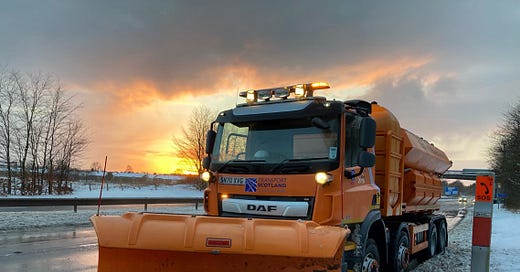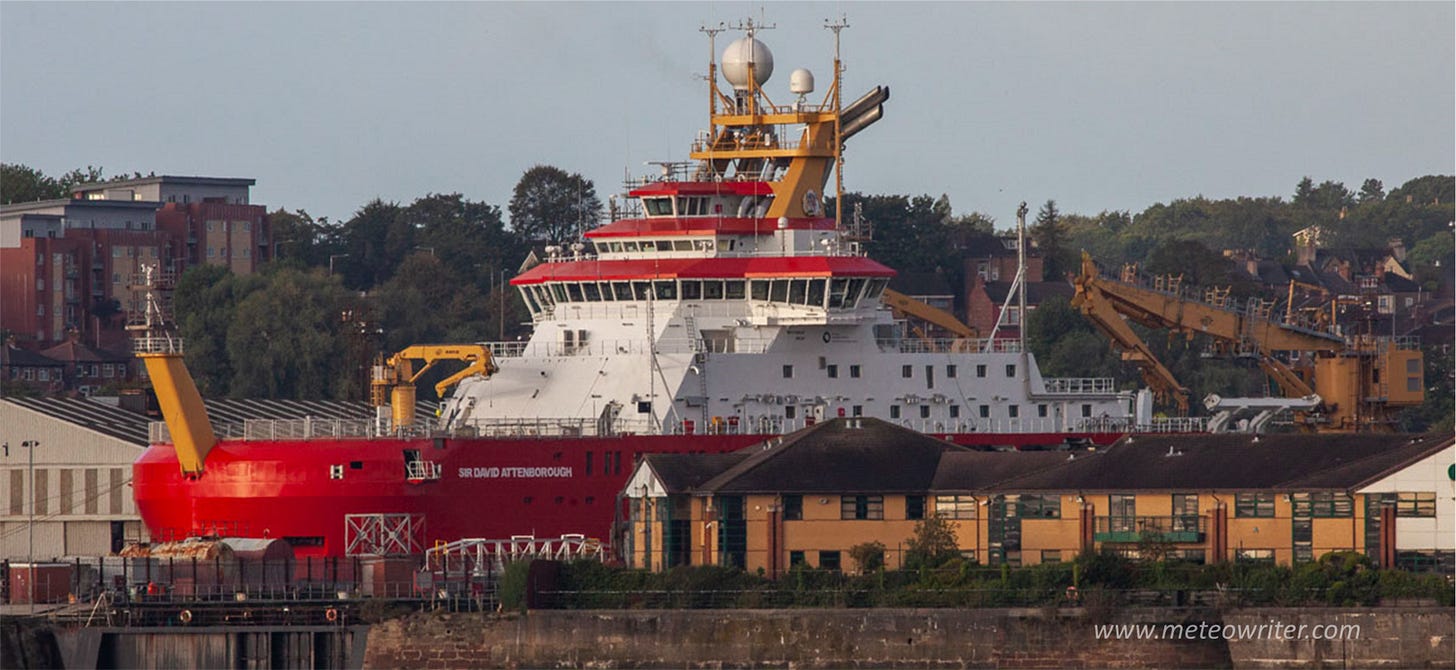Following a recent cold spell, I was intrigued to learn that there is a near real-time webpage showing the locations of Scotland’s road gritters. These are the trucks that spread salt on the roads when an icy period is forecast.
Run by Traffic Scotland, the site is something of an internet sensation but one that had passed me by until recently. Called the Trunk Road Gritter Tracker, it is kept updated between November and March and ‘…displays the current location of gritters and a trail showing where gritters have previously passed along the trunk routes across Scotland.’
A Scottish road gritter (© Crown Copyright 2024, Traffic Scotland)
Each gritter has a name and candidate names are submitted by local schools and competition winners to the two companies that operate the road network. Examples include Polar Patroller and Blizzard Wizzard along with a sprinkling of film and musical references such as the Blizzard of Oz and Sleetwood Mac. Wordplays on people’s names are also popular of which Sir David Attenbrrrrr – named after the famous naturalist and broadcaster - is a typical example.
To improve winter managers’ responses and decision making, Transport Scotland invests in innovative monitoring technology including:
160 weather stations (91 with camera coverage) across the road network
All front line vehicles equipped with remote accessible mobile temperature sensors
Airwave technology - a mobile communications network dedicated for the use by the emergency services. The technology is used in all patrol vehicles to improve communications between control rooms, police and gritter drivers CCTV cameras in gritter vehicles to show real-time conditions.
This includes “Full integration with the Met Office, providing weather information in real-time.” From the Transport Scotland website.
It wasn’t in the least a surprise to find that Gritty McGrit Face also appears in the list as this style of name was inadvertently introduced into the public discourse a few years ago when the British Antarctic Survey wanted to name their latest polar research vessel.
Following an online public survey, at one point it looked as if the ship might have to be called Boaty McBoatface - a situation that arose after a radio presenter jokingly made this suggestion, which spread like wildlife on social media making it the overall winner.
The ship is one of the largest and most technically advanced civilian vessels to be built in the UK and is designed specifically for polar research, with a hull able to break through ice and an overall design that helps to minimise noise disturbances to wildlife. On board equipment includes robotic samplers, marine gliders, remotely operated submersible vessels, rock drills and a range of ocean, atmospheric, biological and geological sensors.
In the end that name was given to one of the ship’s submersible craft with the main vessel named after another of the top entries as the RRS Sir David Attenborough.
The RRS Sir David Attenborough at the Cammell Laird shipyard near Liverpool
Since 2015, potentially severe storms have also been named in the UK as research has shown that this leads to more consistent communication and understanding of the risks. Again the names are chosen through public consultation via a collaboration between the Met Office and the Irish and Dutch national meteorological services: Met Éireann and KNMI.
Names are assigned when there is a risk of unusually strong winds, rainfall, snow and/or other hydrometeorological hazards. The most recent was Storm Darragh a couple of weeks ago, which passed directly over the UK and merited a rare Red Weather Warning for west and south Wales and areas around the Bristol Channel. This was due to the unusually strong and sustained winds that were forecast and subsequently transpired.
“The Met Office issues weather warnings, through the National Severe Weather Warning Service, when severe weather has the potential to bring impacts to the UK. These warnings are given a colour (yellow, amber or red) depending on a combination of both the impact the weather may have and the likelihood of those impacts occurring.” From the Met Office website.
Storm names for 2024-25 (© Met Office)
This was the fourth named storm of the current sequence, which began in early September, with Storms Éowyn and Floris next on the list. However, even though it has probably already been suggested, you’ll be glad to know that there is unlikely to ever be a Stormy McStorm Face.








Thanks for sharing. Very interesting on the gritter tracker - that's actually very useful!
Interesting read! I didn't know about the gritters. Now my days will be spent inventing names for them.
I have always found it a strange idea to give storms human names though - I feel sad for the people who share a name (and therefore the negative association) with some devastating storm!